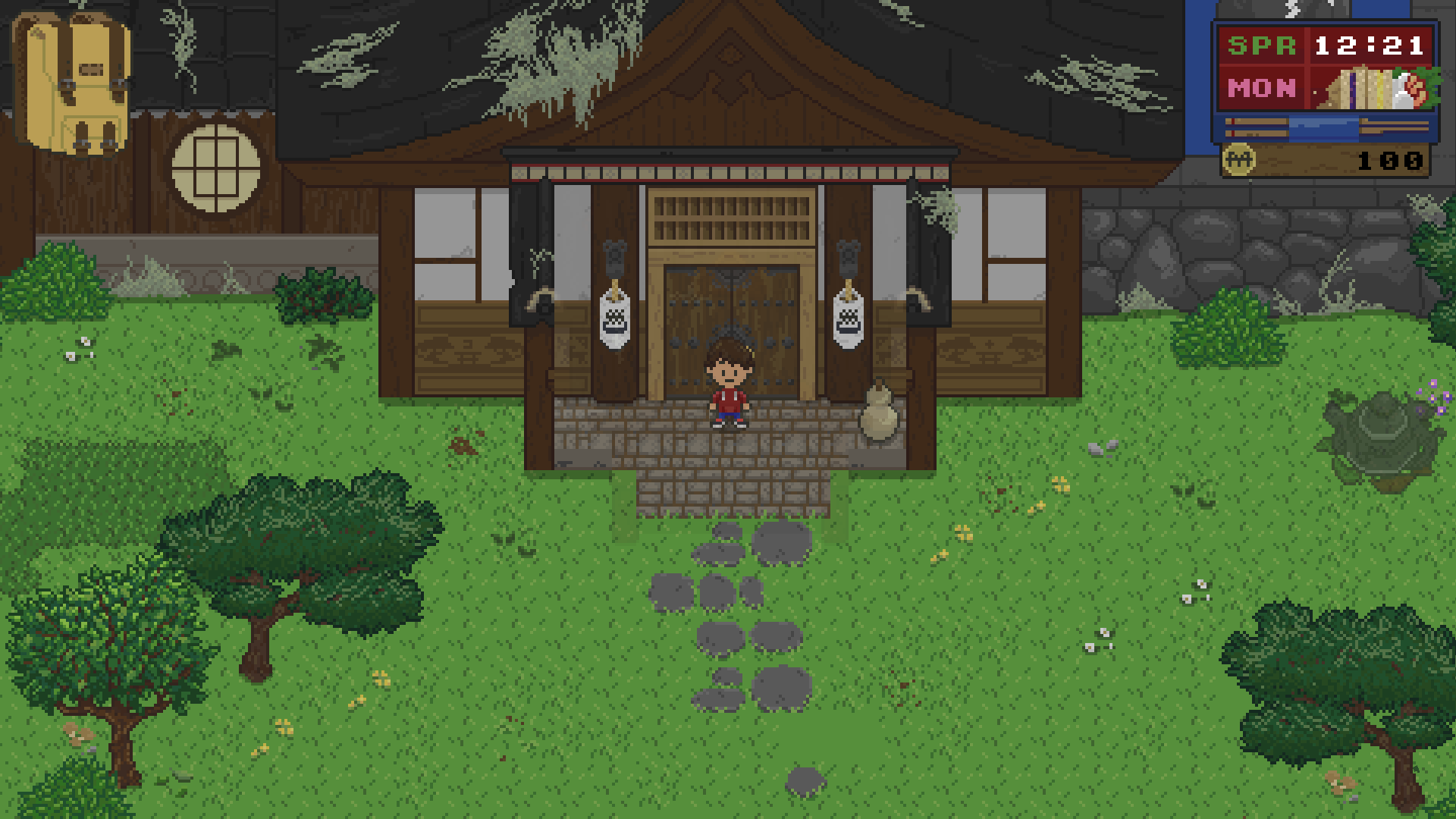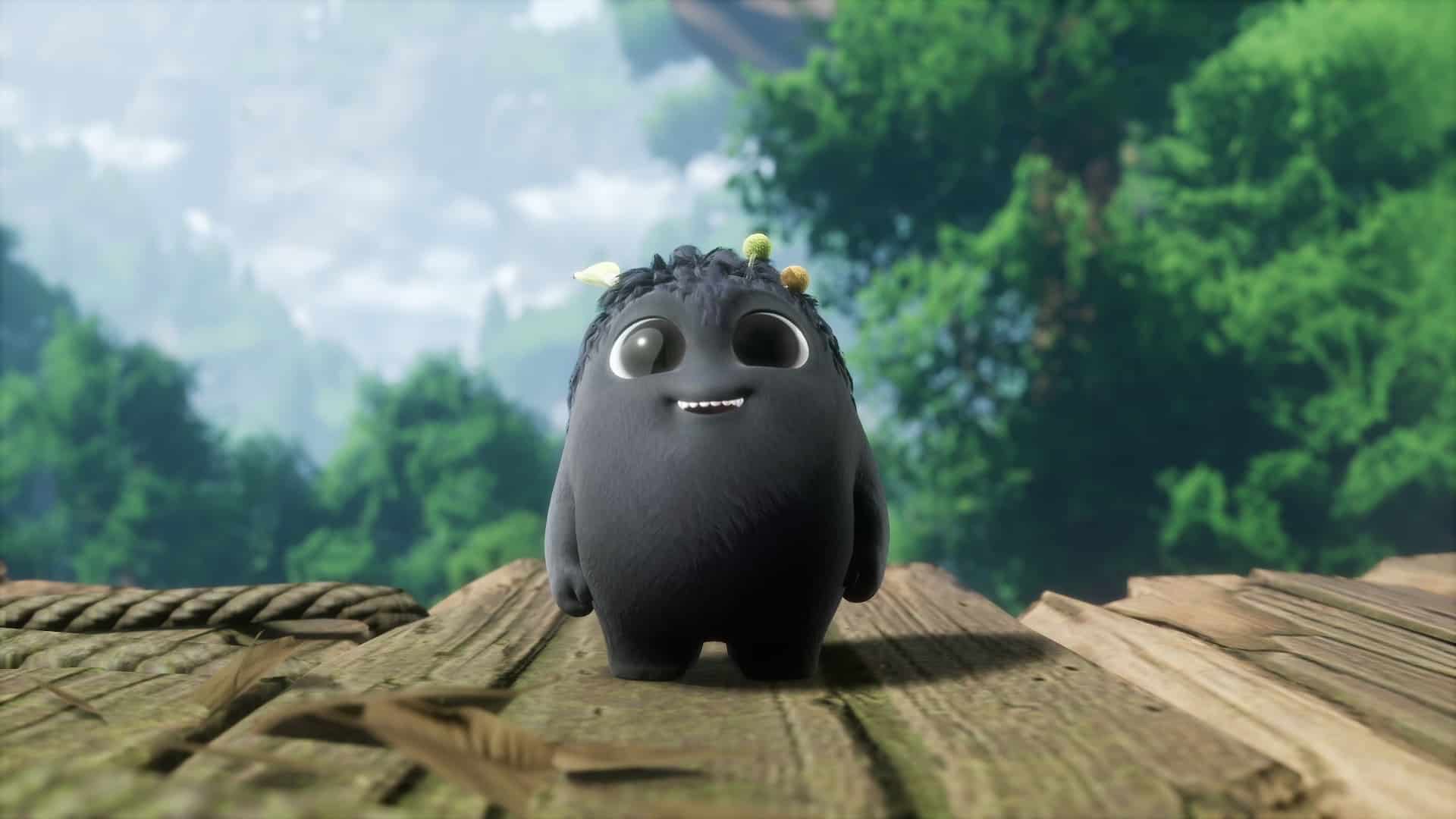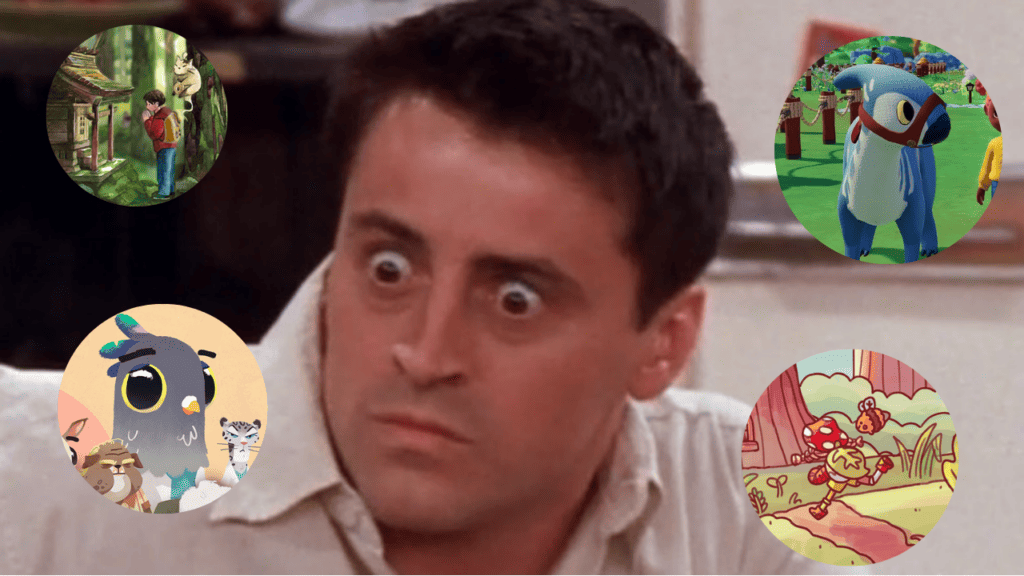I should probably start this argument off with an immediate contradiction. I love cozy games. I have been a consumer of cozy games since way before there was a Wholesome Direct dedicated to them.
I love nothing more than setting aside a AAA open-world game I have been obliged to review to play a little game about farming, being a Frog Detective, or roasting marshmallows as a solar system implodes around me.
They have been the source of so much joy for me over the years. So much so that I have a Junimo tattooed on my arm, for crying out loud. So before we get into all this, know that I am a fan of Cozy Games.
But, putting my feelings as a consumer of these games to one side, Cozy Games are becoming a bit of a problem, and here’s why.
Here’s The Tea
In case you haven’t noticed, journalistic integrity in the video game industry is pretty hard to come by. It’s why we have seen the rise of independent breakaway media, with prominent Phoenix projects like MinMaxx from Game Informer, and Second Wind from The Escapist gaining a lot of traction.
People value authentic and honest content and coverage. Something that is becoming harder and harder to find in mainstream gaming media.

I know firsthand that plenty of the big sites we consume now run on semi and full-blown AI writer models, and I know that the content they produce is all about volume rather than quality.
It’s a system where they burn out contributors and cast them aside like a used napkin, replacing them with a new bum in the seat when they are no further use, but that’s not what I want to point the finger at today.
I want to point the finger at cozy gaming as a genre and why this niche pocket of gaming is making it so much easier for websites to trick consumers into believing that cute equates to quality.
This problem isn’t a new thing, but the final straw and the reason I’m sitting here in a dark room pounding a keyboard is because of a little game called Spirittea.

If you know me, or you listen to the Indie Game Culture Podcast, you’ll know that I was very excited about this game; I’m a huge Studio Ghibli fan, I love Earthbound, and I’m a sucker for a casual cozy game. It ticked all the boxes. But sadly, upon review, the game was extremely underwhelming.
The game looked as cute as a button, and it had some interesting ideas, but the game was clunky, unintuitive, slow-paced, unrewarding for players, and, for lack of a better way to put it, bloody boring.
So, imagine my face when I found that this game managed to earn an aggregate score of 76% on Metacritic. I was disappointed, but honestly, I wasn’t shocked.
I even saw that some publications like VG24/7 and ScreenRant (before they amended it after the fact) gave the game a perfect 10/10. Now granted, no one goes to Screenrant for their game reviews; if I want to get ChatGPT’s ten favorite things about the Barbie Movie, that’s where I’ll go, but not game reviews.

But here’s the thing: that review was far outranking levelheaded and well-thought-out reviews from Destructoid, for example, and indeed ourselves, if I can be so conceited for a second.
Meaning, on launch day, that’s the article that most gamers saw first, took at face value, and bought this game. A game that will have undoubtedly disappointed them like it did me.
What I’m saying here is that you are being sold marketing. If a game looks cute and cozy, it’s easier to sell, and when you discover it was all style over substance, you end up feeling cheated, and that’s not a mistake; it’s a pattern.
Make A Plushie Out Of It
I can’t exactly pinpoint when this all began, but I sure can pinpoint a high-profile instance that helps support my point. Cast your mind back to the 2022 Game of the Year Awards, and look specifically at the Indie category. In there, we had the following nominees:
- Kena: Bridge of Spirits
- Sifu
- Tunic
- Cult of the Lamb
- Neon White
In there, we have some truly groundbreaking games. A game that re-imagined what an FPS Platformer could be. A game that gave us a wonderful modern take on a beat-em-up, and a game that practically one-upped Legend of Zelda in terms of top-down RPG adventure design.
Yet of all those, Kena: Bridge of Spirits, a reasonably well-implemented platforming adventure game with lackluster souls combat wins the day. How does that happen?

Well, I can tell you how that happened. The Pixar graphics and The Rot. Those things were so damn cute that my wife immediately begged me to get a plush toy of one, and at that moment, I knew that this game would win. Not for the right reasons, but it would win, regardless.
Clunky Cozy Examples in 2023
So I touched on Spitittea, but I hear you asking, are there any other tangible examples you can point to? Well, I’m glad you asked.
2023 has been jam-packed full of cozy casual games, and so many of them have flattered to deceive, providing experiences that just don’t stack up to the critical receptions that they have been receiving, and when you read the reviews, it’s primarily down to the fact that ‘The animals are so cute’ or ‘The game has stickers.’
It’s kind of like when you have a kid, and they want to buy a magazine in the shop, but they only want it for the free toy pasted to the front of the cover. That’s what some critical reviews are channeling these days.
To point at some clear examples. First, we have Mail Time, a game that I personally liked due to the cute art style and the quirky writing.
However, as a platformer, it’s ridiculously clunky, and the game is made up of one long fetch quest. So it’s hardly pulling up trees. That one achieved a 74% average on Metacritic. This is probably the least offensive example, but I have more.

Then we have Fall of Porcupine, a game trying so hard to be A Night in the Woods that it should be paying royalties to its developer, Infinite Fall.
It’s a game that is, again, cute as a button but is arguably one of the worst-paced games I have ever played, has a narrative that never threatens to get interesting in any way, and it’s boring as sin. That one earned a 72% average.

Then, to round off this trio, we have Paleo Pines, one of many Stardew Valley offshoots vying to dethrone Eric Barone’s Farming Sim. How you ask?
With cute dinosaurs, slow-paced gameplay, a lack of player rewards throughout, a hollow world with filler NPCs, and a format that feels like a mobile game that has been scaled up to a mid-range console release.
This game got a 73% average on Xbox, but more accurately, a 65% average score on PC, which is more palatable, but if you’re selling me a glorified mobile game I don’t think it even warrants that.
This is only a little taster menu of what this year offered us in the way of cute games being given way too much goodwill, and as much as I couldn’t be without cozy games, it’s dragging down the critical review process of gaming, and making us easy targets as consumers for corporate publishers.
Proof of Concept Means Nothing
Why is this such a big problem then? If you don’t do your research then you set yourself up for a fall, and that’s always been the case. So why don’t we just let the cozy gamers slip up from time to time?
Well, because if we continue to do that, publishers will smell blood. Do you know how easy it is to think of a cool concept and pull together a vertical slice for a game, especially if you have a great studio to call upon?
A studio could drum up a 5-minute slice of a game where you play as a cute little raccoon who lives in a forest and runs their own logging mill, or a Koala who manages their own industrial eucalyptus factory. Random thoughts from my mind dreamt up in mere seconds.
But that goodwill that it earns in that instance doesn’t mean the game will be good. That is literally just marketing aimed at Cozy Gamers who swoon at the sight of an anthropomorphic protagonist.
It’s game development that feels very much in line with creating episodes for a sitcom in its tenth season. The characters have become caricatures of themselves; the humor always relies on the lowest common denominator, and everyone watching is doing so for comfort, not because there is any substance.
Take Joey from Friends. He began as somewhat of an Airhead actor character, sure, but he had layers beyond that. But by the end of the series, his character was borderline mentally challenged, and dined out on catchphrases to get from one episode to the next.

That is what could happen to the Cozy Gaming niche if critics don’t actually do their job and critique. The games will become artificial formulas for cute games brainstormed in conference rooms, and we will only have ourselves to blame.
Don’t Blame The Devs
I can hear the Indie Dev fanatics in the back, pleading that the developer always has the best interests of their game at heart, and it may surprise you to hear that I very much agree with that statement.
Aside from a few weird anomalies, Indie developers are led by passion, and want their game to reflect their vision, sometimes to the detriment of sales and popularity.
However, Publishers don’t think this way, and money talks, I’m afraid.
Just this week, we heard the petty cries of No More Robots as they got in hot water for claiming no creators were playing their game, even though plenty were, and the game already had recouped its costs. Do you know why that was?

Not because he felt bad that the Developer Dan Becketon wasn’t getting his flowers. Not because he felt the game was being unfairly ignored. It was because the publisher had looked at the cute nature of that game, the striking art-style, and its comparisons to Ghibli Films and Stardew Valley and thought they had an absolute nailed-on hit. So they were bitter they backed the wrong horse, nothing more.
It’s evidence that publishers see this as an equation to solve. Cute animal, plus pixel graphics, plus fishing mini-game equals profit, and the only reason we are hearing about it now is because, on this rare occasion, it didn’t go quite as planned.

Publishers are very keen to crack the cozy-casual market, and that was also evidenced by Nexon’s ploy to keep their involvement in Dave The Diver as hushed as they could to find runaway success as a staggeringly polished indie game.
I do feel that, yes, it does warrant that tag as it was a small debut studio, albeit with the funding of Nexon behind them, but it just goes to show that smoke and mirrors can really work in a Publisher’s favor.
No More Grading On A Curve
So what’s the point then? Do we all, as a collective, stop buying wholesome games unless we can verify and validate their quality and merit?
Hell no, that shouldn’t be the job of the consumer. You should be able to look at a cute game, look at a review, and trust that you have done all you can. Honestly, this article isn’t really for 99% of those who will stumble across it.
This is primarily a jab at those performing reviews for video games today. You need to separate yourself from the ‘cozy vibes’ as they can add some points on the board for an otherwise lukewarm game, but they should never be the pillar upon which your entire positive review leans on.
I do believe that Indies as a whole should be graded on a curve compared to AAA games, but what I don’t understand is why there is a separate curve being made for these games with the saturation dialed up to max, loads of mushrooms, and cute animals with huge eyes.
So this is a message to all you critics like myself. Don’t be suckered in. Take a step back, search for the substance, and score appropriately.
I hope you enjoyed my take on the current state of cozy gaming, and I would love to hear your own thoughts in the comments. As always, thanks for reading Indie Game Culture!
- Best Beginner Hades 2 Keepsakes - May 13, 2024
- 15 Beginner Tips For Hades 2 Newbies - May 9, 2024
- What’s New In Hades 2? - May 8, 2024

